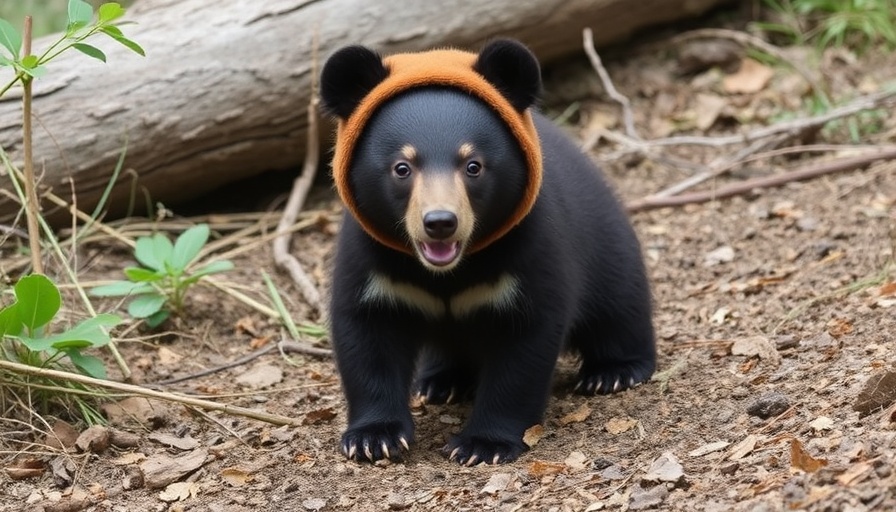
How a Cub's Rescue Reflects Our Connection to Nature
When a small black bear cub was discovered starving in the picturesque Los Padres National Forest, the news of his plight resonated deeply with many. Rescued by compassionate campers, this two-month-old bear is being raised by the dedicated staff at the San Diego Humane Society’s Ramona Wildlife Center, which has taken unique steps to ensure this cub retains his wild instincts, avoiding the imprinting on humans that can lead to conflicts later in life.
The Journey of Transformation
Upon arrival at the wildlife center, the cub weighed a mere 3 pounds after days without nourishment. Thanks to the exemplary care provided by the wildlife operations team, he has now quadrupled in size. The staff is focused on mimicking a mother bear's nurturing behaviors, using everything from plush toys to even dressing in bear costumes. This innovative approach is designed to help prepare him for life back in the wild — an essential step for ensuring he doesn’t associate humans with food, thereby preventing future conflicts.
Importance of Minimizing Human Interaction
Animal welfare experts emphasize that keeping the bear cub as wild as possible is crucial. Autumn Welch, the center’s wildlife operations manager, notes, “They’re really smart and very food motivated.” This highlights the risks faced by bears that become too comfortable around people — they may venture into neighborhoods and become nuisances, leading to unfortunate outcomes. By fostering a sense of wildness in the cub, they hope to instill natural behaviors that will keep him safe and secure once released.
Preparing for a Future in the Wild
It is anticipated that the cub will remain at the facility for up to a year, with training that includes interactions with staff analogously mimicking bear behavior. Moreover, there are plans to eventually pair him with another orphaned cub, which will greatly assist in his behavioral development. This natural camaraderie among bears will promote social skills critical for survival in the wild.
Community Response and Wildlife Education
This touching story showcases the community's role in wildlife rescue efforts. As individuals increasingly encounter wildlife in their daily lives, education about how to coexist peacefully with our animal neighbors becomes essential. Authorities, including the California Department of Fish and Wildlife, are considering various factors when planning future releases, including the bear's upbringing, population dynamics, and human interaction possibilities. Improved awareness can foster responsibility among residents, ensuring that interactions with wildlife remain safe for both bears and humans.
Emotional and Inspirational Lessons
The cub's journey is not just about rehabilitation; it highlights a profound connection between humans and nature. It serves as a reminder of our responsibility to protect the environment and all its inhabitants. This bear's resilient spirit reflects the essence of wildlife recovery, enriching our understanding of cohabitation with the natural world. Each step taken in nurturing this bear embodies a commitment to ecological preservation that resonates beyond the facility.
As we reflect on the story of this little bear, it invites us all to think about our actions towards wildlife and the environment. Perhaps we can adopt more sustainable practices in our lives that mirror the commitment shown by the staff at the Ramona Wildlife Center.
 Add Row
Add Row  Add
Add 





Write A Comment